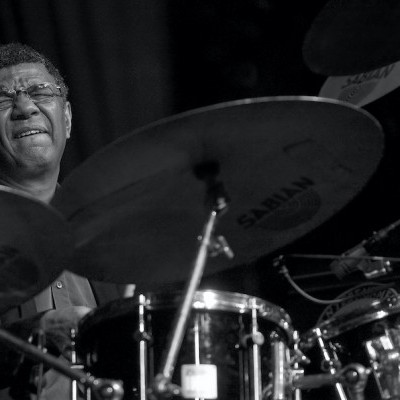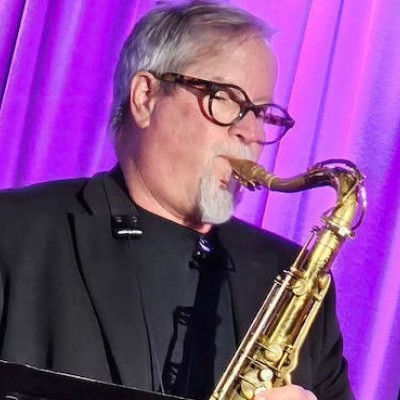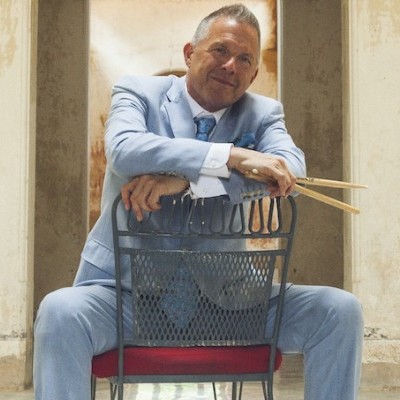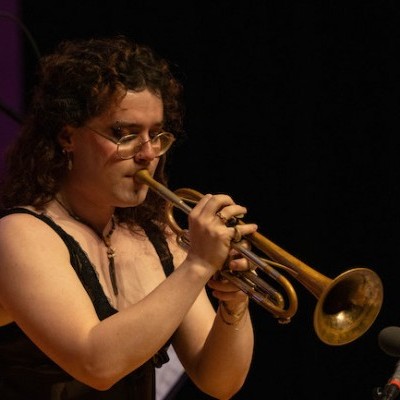Oct 28, 2025 10:47 AM
In Memoriam: Jack DeJohnette, 1942–2025
Jack DeJohnette, a bold and resourceful drummer and NEA Jazz Master who forged a unique vocabulary on the kit over his…

Saxophonist Teodross Avery leads two different quartets on Harlem Stories: The Music Of Thelonious Monk.
(Photo: Rippy Austin)Saxophonist Teodross Avery’s latest disc, Harlem Stories: The Music Of Thelonious Monk (WJ3), is both a homecoming and tribute.
Monk’s music entered Avery’s life in the 1980s, when he was a teenager. While growing up in California’s Bay Area, he was already checking out jazz through either his father’s album collection or through a local college radio program. But when Avery heard the 1963 LP Monk’s Dream, it signaled a turning point.
Avery’s father had towering speakers to complement his sound system. When alone in the house, a 15-year-old Avery would blast Monk’s Dream. “When I played it on my dad’s stereo, it really felt like I was in the club with the musicians,” he recalled.
While Avery recognized how advanced Monk’s melodies and harmonies were, it was the music’s propulsive swing that captivated him. “Monk purposely made sure that that rhythm section was swinging,” Avery said. “He pulled you in as a listener through the swing.”
Decades later, after establishing himself as saxophonist, composer and recording artist in New York, Avery returned to California in 2011 to get his doctorate in jazz studies from the University of Southern California. By then, he had proved his acumen in post Motown-bop, particularly on his early leader dates, In Other Words (1994) and My Generation (1996). Additionally, he demonstrated his versatility by working with a variety of artists in jazz, hip-hop, soul and rock, including Dee Dee Bridgewater, Donald Harrison, Leela James and Amy Winehouse.
“When I left [New York City], I knew that it was time for me to return to my roots. I needed to reconnect to what inspired me from the get-go in music, which was Monk and John Coltrane,” Avery said. “When I came back, I was able to get back to who I was as a jazz musician.”
Harlem Stories follows Avery’s 2019 disc, After The Rain: A Night For Coltrane (Tompkins Square), and finds the bandleader fronting two separate ensembles. For the tighter interpretations of tunes like “Teo” and “Evidence,” Avery leads a quartet that includes pianist Anthony Wonsey, drummer Willie Jones III and bassist Corcoran Holt. The bassist also is featured in the other band, which includes pianist D.D. Jackson and drummer Marvin “Bugalu” Smith. With the latter combo, Avery delivers decidedly more adventurous readings of such Monk pieces as “Ugly Beauty” and “Trinkle, Tinkle.”
For Holt, working in both lineups forced him to dig deep into Monk’s music. “I’d definitely played some of those tunes in other situations,” he said. “But I’d never recorded his music. I went back to some of Monk’s recordings. That gave me a refresher, so that I [could] focus on the hook-up between the rhythm section and how Monk would play.”
Throughout the program, Avery—on both tenor and soprano saxophone—enlivens Monk’s music with a combination of reverence and blistering conviction. “I’ve heard other Monk [tribute] albums, on which the musicians totally don’t care about the aesthetics of Monk; and the albums become more about their aesthetics,” Avery said. “That’s cool if that’s what they want to do. But sometimes when musicians do that, if the listener didn’t know Monk [beforehand], they wouldn’t know why Monk was special from listening to those records.”
Because of the coronavirus pandemic, Avery hasn’t had many opportunities to perform the material from Harlem Stories live. While his concert dates have taken a hit, Avery’s career as head of jazz studies and commercial music at the California State University, Dominguez Hills, is thriving. Nowadays, he teaches jazz ensemble classes via Zoom. And while the lack of in-person interaction is a challenge, Avery sees the situation as an opportunity to focus on each student’s individual work. In fact, some of the remote learning experiences have been more productive than a typical in-person lesson.
“In the Zoom classes, I just go down the line: ‘Let me see your chord scales,’” Avery continued. “The students can’t get away from me. When students are playing in a [live] ensemble, there are weaknesses that get camouflaged by other members of the band. Through Zoom, I can isolate a student and they can’t cop out. It’s a pleasant surprise.” DB
This story originally was published in the February 2021 issue of DownBeat. Subscribe here.

Jack DeJohnette boasted a musical resume that was as long as it was fearsome.
Oct 28, 2025 10:47 AM
Jack DeJohnette, a bold and resourceful drummer and NEA Jazz Master who forged a unique vocabulary on the kit over his…

“I’ve told students, ‘I don’t mind if you use AI for this or that project,’” says MIT’s Pascal Le Boeuf. “‘But you need to tell me.’”
Sep 18, 2025 11:14 AM
A standard joke when it comes to discussing artificial intelligence, or AI, is that it’s developing so rapidly that…

Chuck Manning Works for NASA … and plays jazz.
Sep 18, 2025 11:23 AM
Congratulations! After years of study, you’ve earned your degree in jazz performance. But let’s face it: Making a…

Always a sharp dresser, Farnsworth wears a pocket square given to him by trumpeter Art Farmer. “You need to look good if you want to hang around me,” Farmer told him.
Sep 23, 2025 11:12 AM
When he was 12 years old, the hard-swinging veteran drummer Joe Farnsworth had a fateful encounter with his idol Max…

“Make time and energy to meet people and make friends,” suggests Millie Ahearn, a student at DePaul University.
Sep 18, 2025 11:32 AM
For many students, the transition into a collegiate jazz program can feel overwhelming — new peers, unfamiliar…